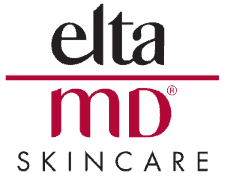Also known as actinic elastosis, solar elastosis is a skin condition caused by years of accumulated sun exposure. It literally means “damage to skin elasticity from sun exposure.” More commonly, we refer to this as “sun damage” or “photoaging.” Although not a medical concern itself, solar elastosis may be an indication that a patient is at a higher risk of skin cancer, due to his or her history of sun exposure. However, with a proper diagnosis and treatment, this condition can be improved.
What Is Solar Elastosis?
Solar elastosis is characterized by thick, yellowed skin that sometimes appears furrowed, creased, or bumpy. It is seen in people who have experienced long-term sun exposure over many years and is a type of photoaging. The sun’s UV rays break down the collagen and elastic fibers in your skin, causing the skin to lose its strength, flexibility and structural support. Because it is primarily caused by UV damage, solar elastosis is most commonly seen on areas of the body that are exposed to the sun, such as the face, neck, and arms.
In some cases, this condition may also be caused by smoking, as tobacco can have similar negative effects on the skin as UV rays, damaging collagen and elastin fibers.
Is Solar Elastosis Preventable?
Yes, solar elastosis is easily prevented by practicing good sun protection habits. However, if you are already seeing signs of this condition or other signs of skin aging, then seeking the proper treatment will be your best option. While you can’t undo the sun damage that has already occurred, you can still adopt the right skincare regimen and healthy lifestyle habits to prevent future signs of sun damage and aging from showing up on your skin – it is never too late to start taking great care of your skin!
For more help choosing a sunscreen that is right for your skin, you can read this blog about sunscreen basics. My general advice is to try to find a physical sunscreen that you like. Learn more about sunscreen basics here. These products contain the minerals zinc oxide and/or titanium dioxide, rather than chemical ingredients. Therefore, physical sunscreens are generally better tolerated for most skin types, even those with sensitive skin.
Because those with solar elastosis may be at an increased risk for skin cancer, it is important to perform regular self-exams of your skin, as well as schedule annually or biannually checkups.
How Is Solar Elastosis Treated?
If you are seeing signs of solar elastosis on your skin, fractional laser treatments may be the most effective solution. CO2RE laser resurfacing effectively treats sun damage, uneven pigmentation, fine lines and wrinkles, and other signs of aging skin. The VBeam vascular laser may also be used to address irregular pigmentation of the skin caused by the sun.
In addition to in-office treatments, following the proper skincare regimen for your skin type is crucial to getting and maintaining healthy skin. Anti-aging skincare ingredients such as retinoids, antioxidants, growth factors, heparan sulfate, and defensin can help to improve lines, wrinkles, and age spots as well.
In Summary
The sun is one of the largest contributors to aging skin. While prevention is ideal, conditions like solar elastosis can be treated with a combination of in-office laser treatments, the proper skincare regimen for your skin type, and sun protection habits like wearing SPF daily and avoiding deliberate tanning.
If you have more questions about what solar elastosis is or would like information on how it is diagnosed and treated, please contact us online or give our Miami office a call at 305-532-5552. You can also sign up for our newsletter by visiting www.derm.net, or follow us on Facebook, Instagram, and YouTube.
©2019 Metabeauty, Inc.














